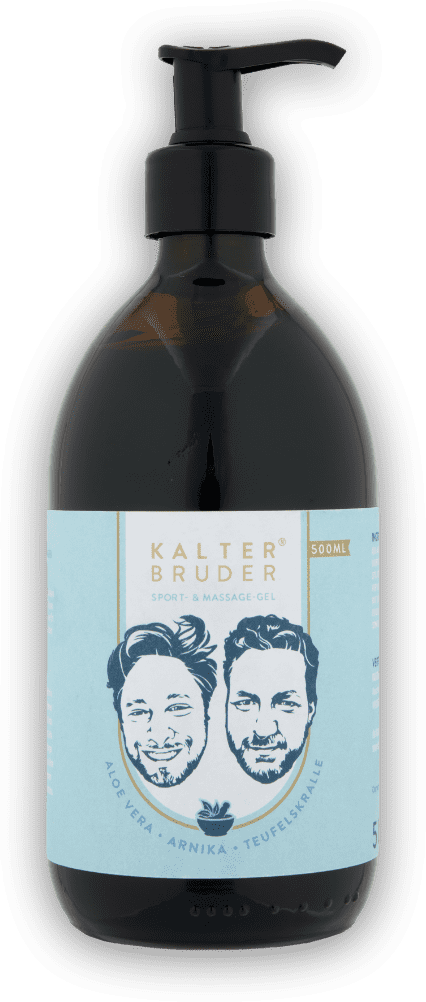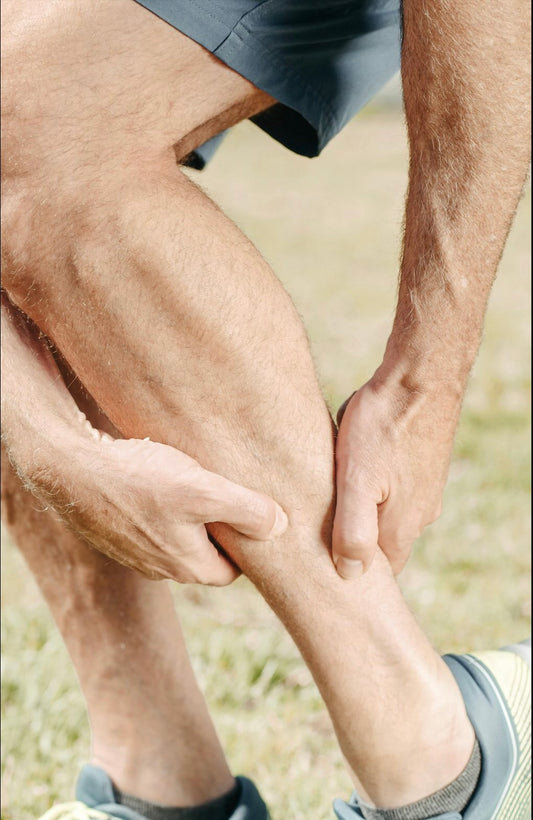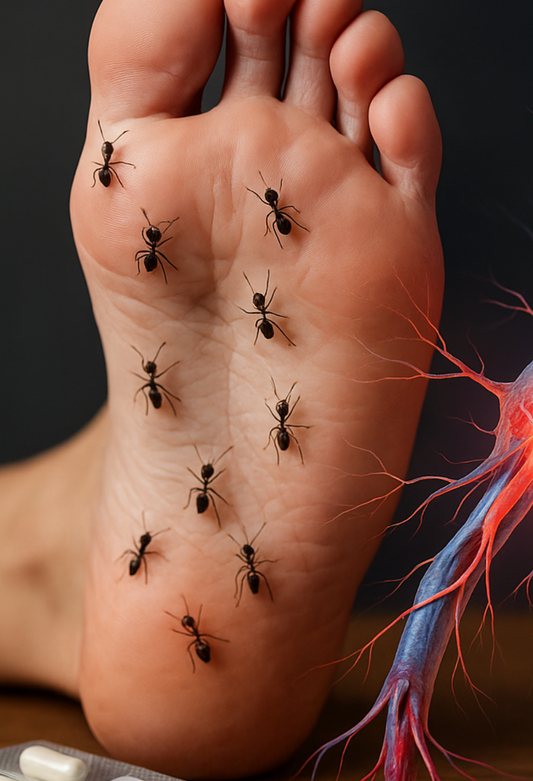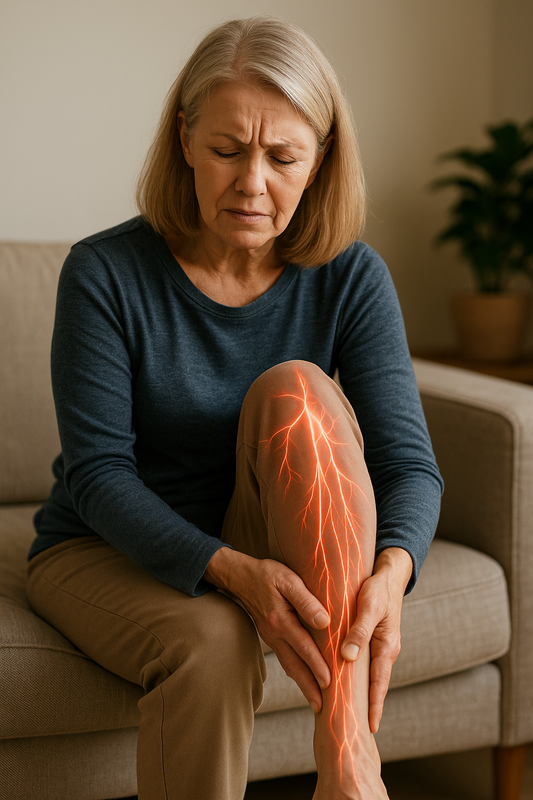Why the right choice is crucial and which models really help.
For people with polyneuropathy, choosing the right footwear is much more than a question of comfort. The right shoes can alleviate your symptoms, improve your stability and help prevent falls. But with the large selection of models and brands, it quickly becomes confusing. In this article, you will find a detailed overview of suitable models, their advantages and disadvantages, as well as practical tips on what you should definitely look out for when buying shoes.
Increased risk of falls
Did you know that people with polyneuropathy have twice the risk of falling as people of the same age without nerve damage? Studies show that around 50% of polyneuropathy patients fall at least once a year - which is often due to unsuitable footwear. A study by the National Institute on Aging also found that only around 30% of those affected know how important the right footwear is for their health. Shoes with sturdy padding and a wide fit not only offer more safety, but also relieve the pressure on sensitive nerves and muscles.
The best shoe models for polyneuropathy in comparison
Thanks to specialized shoe manufacturers, there are now a variety of models that have been developed specifically for people with polyneuropathy. Here you will find a selection of the best models, including advantages and disadvantages.
1. Solidus - “Kate” sneakers
- Advantages: This sneaker is specially designed for sensitive feet with a wide fit and removable insole, providing space for your own orthopedic insoles. The model scores with high-quality material and good padding.
- Disadvantages: At around €150, the “Kate” sneaker is one of the high-priced models, and the material can seem a bit stiff at first.
- Reviews: Customers praise the high level of comfort and support provided by the wide fit, which is especially helpful for people with polyneuropathy.
2. Finn Comfort - “Milano” sandal
- Advantages: The "Milano" sandal offers adjustable Velcro fasteners and an anatomical footbed that is ideal for sensitive feet. It is particularly suitable for warm days and relieves the nerves with its soft padding.
- Disadvantages: The open shoe offers less stability compared to closed models, and the price of about 140-180 € is not exactly cheap.
- Reviews: Positive feedback on comfort and customization options make the “Milano” sandal a popular choice.
3. Ganter - "Sensitive" series
- Advantages: The "Sensitive" series offers particularly soft inner padding, a wide fit and removable insoles. The shoes are ideal for people with very sensitive feet and can be individually adjusted.
- Disadvantages: The wide cut is less suitable for narrow feet, and with prices between 160 and 200 €, the series is one of the high-priced options.
- Reviews: Customers particularly appreciate the cushioning and support in the forefoot and heel area.
4. Ranger - "Kya" low shoe
- Advantages: The “Kya” low shoe is available in width H (extra wide) and offers enough space for swollen or deformed feet. The good cushioning and the non-slip sole make it an ideal companion.
- Disadvantages: This shoe is less suitable for narrow feet and costs around €130, which puts it in the mid to high price range.
- Reviews: Customers appreciate the stability and support, which is particularly beneficial for polyneuropathy patients.
insoles and custom-made shoes
For people with polyneuropathy, insoles and custom-made shoes are an important addition to classic footwear. While specially developed insoles support the individual shape of the foot and place padding where you need it most, custom-made shoes help to adapt the fit precisely to the anatomy of your feet. This gives you the best possible support and reduces pressure points, which is particularly important in the case of nerve damage.
Orthopedic insoles – targeted relief
- Cost: Orthopedic insoles usually cost between €60 and €150, depending on the material and manufacturing method. For people with polyneuropathy, soft padded insoles are particularly recommended as they increase shock absorption and reduce pressure points.
- Manufacturer: Well-known manufacturers such as Bauerfeind, Pedag and Medi offer specialized insoles that are specifically designed for sensitive feet.
- Health insurance coverage: In Germany, statutory health insurance companies usually cover two pairs of orthopedic insoles per year if prescribed by a doctor. This requires a diagnosis and prescription from an orthopedic specialist.
Tailor-made shoes – perfection for your feet
- Cost: Custom-made shoes are a high-quality but expensive investment. Depending on the style and materials used, costs start at around €300 and can go up to €800 per pair.
- Contact points: Medical supply stores and orthopedic specialist shops such as Schein Orthopädie or Orthos specialize in custom-made shoes. Here you can expect individual advice and adjustment.
- Health insurance coverage: Here too, health insurance companies cover the costs of orthopedic shoes if they are medically necessary. However, a personal contribution of around €80-150 per pair is usually required. However, some private supplementary insurance policies offer options for full coverage of costs.
Tips for selecting and adjusting insoles and shoes
- Individual advice: Take advantage of comprehensive advice – many orthopedic specialist shops and medical supply stores offer foot pressure measurements and individual adjustments.
- Regular checks: It is especially important to check the fit of insoles regularly, as feet can change over time.
- Choice of material: Choose breathable and soft materials – they reduce friction and promote a comfortable fit.
- Consider the break-in period: Custom-made shoes in particular often require a break-in period. Plan for a few weeks to get used to the new feeling of wearing them.
Conclusion: What you can take away for yourself
Choosing the right footwear is very important for people with polyneuropathy and offers much more than just comfort. Whether orthopedic insoles or custom-made shoes - the investment is worthwhile and can significantly improve your quality of life. Consider the options for health insurance support and opt for high-quality, wide models that offer you safety and stability in everyday life.















